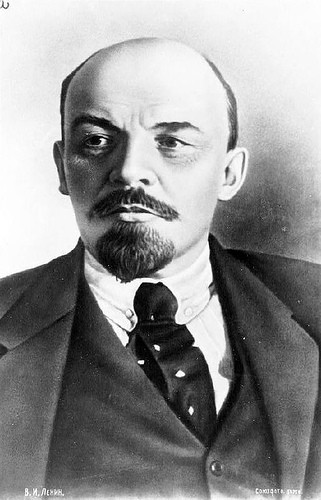Leninism
Leninism. A strategy of Marxist revolution designed by Vladimir Lenin for the specific needs of tsarist Russia and the political circumstances in Europe in the early 20th century. In view of Russia's backwardness, Leninism can be interpreted more widely as a strategy of building socialism under adverse or ‘unripe’ conditions. The problem confronting Lenin at the turn of the century was that, several decades after Karl Marx's confident predictions about the dissolution of capitalism and nationalism, neither had disappeared. Lenin explained their persistence by pointing out that capitalism had weakened the revolutionary movement by making some concessions to workers and promoting ‘trade-union consciousness.’ Hence, Lenin proposed, in What Is to Be Done? (1902), that Marxists organize themselves around a nucleus of professional revolutionaries who could not be diverted from revolution. Then, in Imperialism, the Highest Stage of Capitalism (1917), he argued that because capitalism had avoided collapse by exploiting overseas markets, the strategy of revolution had to be extended to the Third World, which was part of an ‘international proletariat.’ In the new circumstances, nationalism (or anticolonialism) was a progressive force. Linking ‘Great Russian chauvinism’ with imperialism, Lenin persuaded the Russian Social Democratic Workers' party to adopt self-determination as official policy. Since he identified oppression with capitalism and class-divided societies, Lenin saw no contradiction in advocating both the ‘right of self-determination’ and the ‘closest unity of the proletariat of all nationalities.’ The right of self-determination, he assumed, would be exercised only against the tsarist regime, not against a socialist one. For Lenin, national liberation was an expedient means to socialist revolution, not a goal in itself.
Leninism represented a militant but minority position within the socialist movement. In contrast to the more moderate Mensheviks or Socialist Revolutionaries, Lenin insisted that Russia was on the verge not merely of a bourgeois-democratic revolution but of a proletarian revolution that would usher in socialism. His strategy took into account the widespread unrest in Russia while sidestepping its causes and their relation to Marxist theory. Lenin believed that the Party as the disciplined vanguard of the proletariat could take the place of a mass working-class uprising, and that it would be supported by the rebellious peasantry and nationalities, which had been oppressed under tsarist rule. Once revolution had occurred in Russia, the ‘weak link’ in the chain of capitalist states, socialism would sweep through the rest of Europe. Although he was wrong about Europe, Lenin succeeded in overthrowing the Provisional Government and consolidating Bolshevik power throughout most of the former Russian Empire.
During the revolutionary period (see October Revolution of 1917) Leninism complicated and radicalized the political choices available to the Ukrainian leaders. Although the political profile of the Central Rada was democratic and moderately socialist, the Rada was temporarily allied with the Bolsheviks, the most militant faction of the Petrograd Soviet, against the Provisional Government, which was hostile to Ukrainian autonomy. Upon taking power Vladimir Lenin redrew the military and political battle lines. He sent the Red Army to quash the independence movement in Ukraine [see Struggle for Independence (1917–20); Ukrainian-Soviet War, 1917–21]. Identifying socialism with Bolshevism and branding everyone else ‘counterrevolutionary,’ he pushed the entire political spectrum leftward and forced the Ukrainian government to adopt a hastily and poorly constructed agrarian reform program, which alienated the wealthier peasants without satisfying the rural majority. The Ukrainian government was faced not only with an armed struggle against the Red Army but also with a political struggle for the support of the Ukrainian peasantry.
With the end of the Civil War Vladimir Lenin retreated from strictly socialist principles and introduced the New Economic Policy and a ‘cultural revolution’ to give the new regime a chance to take root.
In Ukraine Leninism was at first seen as an effort to reconcile Bolshevism and nationalism. To appeal to the Ukrainian intelligentsia and peasantry Lenin granted Ukraine a degree of autonomy within the federal Soviet state and laid the foundations for the policy of indigenization and Ukrainization. Basically, Lenin gave legitimacy to the belief, prevalent among leading figures of the Communist Party of Ukraine during the 1920s, that defending Ukrainian national interests was compatible with the social aims of communism (see National communism).
(See also Marxism-Leninism.)
BIBLIOGRAPHY
Pipes, R. The Formation of the Soviet Union: Communism and Nationalism, 1917–1923 (Cambridge, Mass 1954)
Meyer, A. Leninism (Cambridge, Mass 1957)
Fedenko, P. Marksysts’ki i bol’shevyts’ki teoriï natsional’noho pytannia (Munich 1960)
Dziuba, I. Internationalism or Russification? (London 1968)
Conquest, R. V.I. Lenin (New York 1972)
Mace, J.E. Communism and the Dilemmas of National Liberation: National Communism in Soviet Ukraine, 1918–1933 (Cambridge, Mass 1983)
Zenovia Sochor
[This article originally appeared in the Encyclopedia of Ukraine, vol. 3 (1993).]
